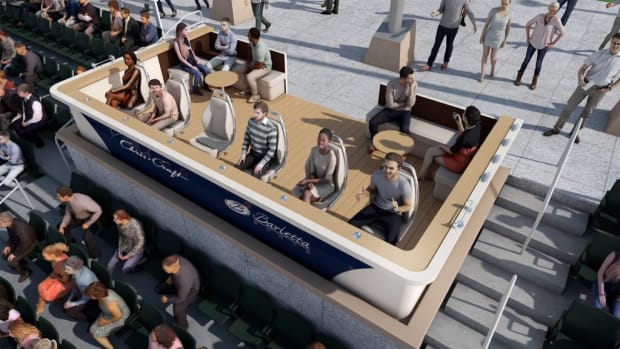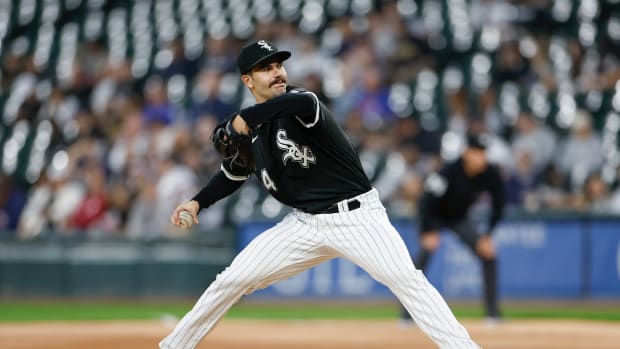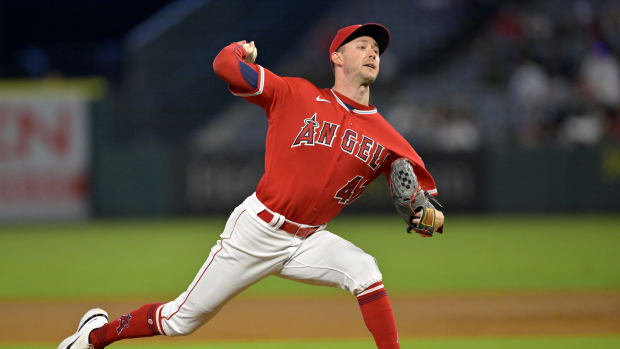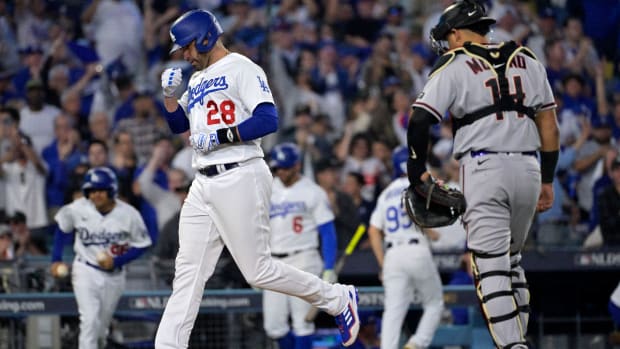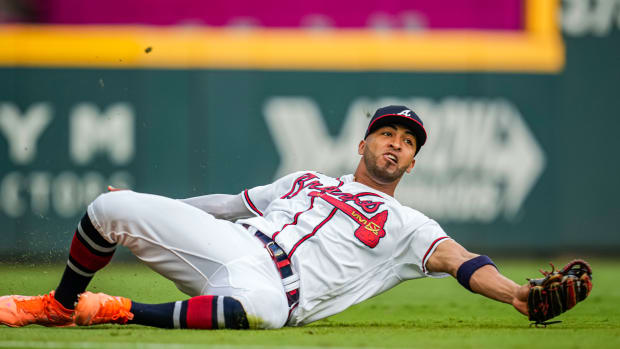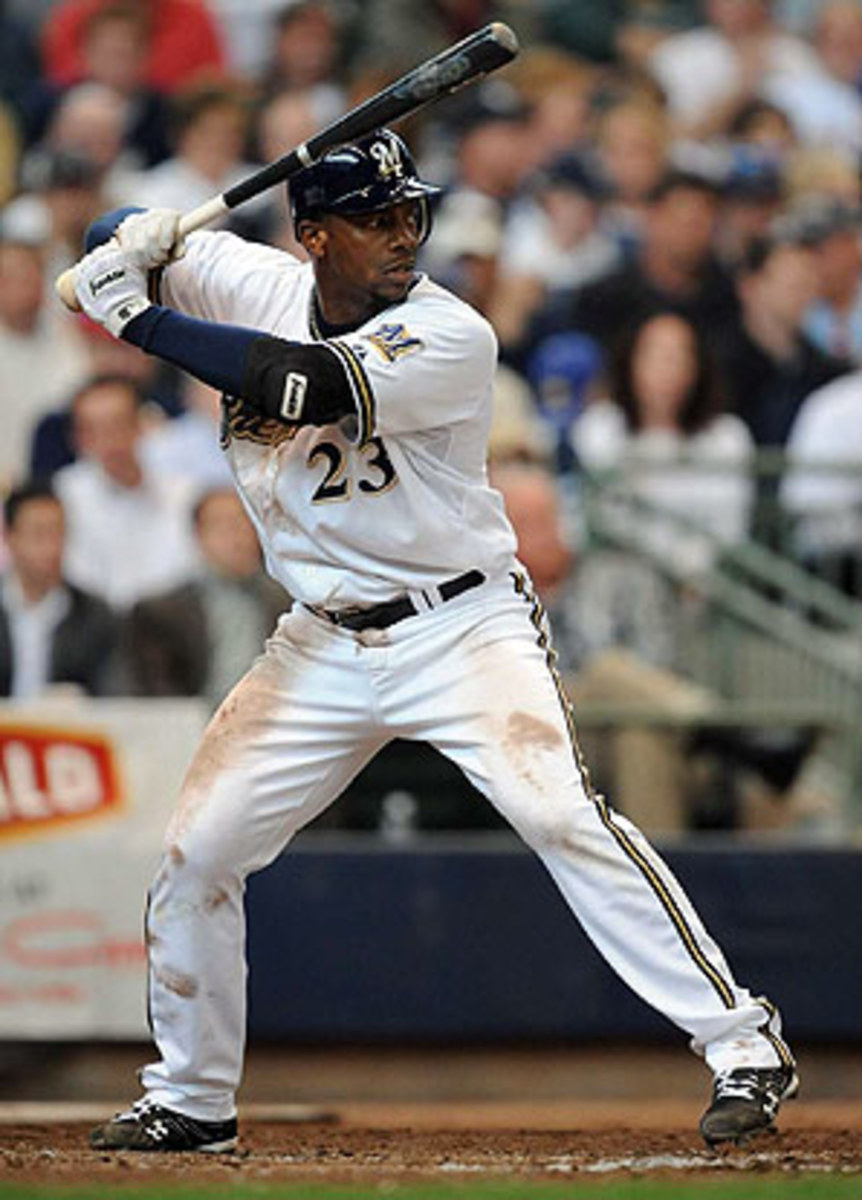
GM for a Day: Dodgers
In the run-up to the winter meetings, which begin on Monday in Las Vegas, I'm going to resurrect a feature I've done sporadically in the past, "GM For a Day." It is exactly what it sounds like: I take over a team and outline what I think needs to be done. (Note that no one has ever hired me based on these pieces.) With 30 teams and probably five columns before next Monday, I won't get to everyone, but expect three or four more of these in the days ahead.
Today, I slip into Ned Colletti's shoes and take over the Dodgers. Coming off of a division title as a high-revenue franchise with a fantastic farm system -- even after sloughing off talent right and left over the last few years -- you would think the Dodgers might be in fantastic shape. They're certainly better off than many teams, but look past the crown and the money and the kids and you find a team that is going to be changed significantly a year from now, one that has a staggering amount of dead money on the payroll, and one which is run, from the top down, a bit strangely.
The core talent here is as good as you'll find for ability, age, payroll and team control. Russell Martin, James Loney, Matt Kemp, Andre Ethier, Chad Billingsley and Clayton Kershaw match up with any top six roster spots in the game once payroll and control are considered. Some teams go decades without having that much talent come through their system; the Dodgers will put five of those guys on the field 40 percent of the time next year. Throw in Hiroki Kuroda, James McDonald, Jonathan Broxton, Hong-Chih Kuo and, perhaps, Chin-Lung Hu, and the Dodgers will have nearly half their roster comprised of talent they developed or signed, with only Ethier a marginal call in that area. The Brewers, the Rays and maybe the Diamondbacks are the only teams that can put that much internally-developed talent on the field in 2009.
Yet the Dodgers have some problems. Outside of Martin, and the notion that Kemp is a centerfielder, it's a pretty weak team up the middle. A Hu/Blake DeWitt middle infield is problematic, because as good as Hu is defensively he has yet to show that he can hit above Double-A. He's a career .307/.331/.451 batter in the PCL, with home games in Las Vegas and just 13 walks in more than 350 PA, and a .193/.250/.250 hitter in parts of two seasons in the majors. Hu slugged .507 at two levels combined in '07, but that '08 performance is worrisome. His glove warrants their opening the season with him at shortstop, because bringing along Billingsley, Kershaw and McDonald will be easier with a plus-plus glove at shortstop.
DeWitt was, in a small sample, a statistical positive at second base, and there's an argument that it's the only place his bat will play. On the other hand, he looked awkward at the keystone almost all of the time, the Dodgers currently have no third baseman, and second basemen are something of a dime a dozen. It seems like a better idea to move DeWitt back to third and hope that the upward trend in his plate discipline was more than just a lineup-position thing. It's an open question for the 23-year-old, who drew a disproportionate number of intentionals (nine of his 45) and had just three unintentional walks in 108 PA outside of the seventh and eighth slots in the lineup. With Andy LaRoche gone, however, DeWitt is the choice to play third.
That leaves second base as a hole. I'm not ready to anoint Ivan DeJesus as a middle-infield answer based on three great months at Double-A. His presence, however, makes me feel better about thinking of second base as a short-term problem, something DeJesus can solve very late next year or in 2010. With that in mind, I want to find a stopgap solution, something there are always plenty of at second base. With Loney and Hu at first base and shortstop, sacrificing some defense for offense is an option here, especially with the team lacking a true leadoff hitter. Ray Durham still provides OBP and won't require draft-pick compensation for signing him. A two-year, $8 million offer should bring him into the fold, and allow the Dodgers time to figure out what DeJesus and Hu will be for them.
I mentioned Kemp as a center fielder earlier... he's a right fielder by trade, with good raw speed that doesn't translate well to center, and equipped with a right-fielder's arm. The decision to play him in center, flanked by Ethier and Manny Ramirez, was absolutely correct late last year, but now, with Ramirez gone, ideally the Dodgers would find a center fielder, slide Kemp to right and Ethier to left, and give themselves a plus defensive outfield.
Well, find may not be the best verb. The Dodgers "found" Juan Pierre two offseasons ago, and Andruw Jones last winter, to disastrous results. Both are still around, soaking up $27 million in payroll and providing brutal performance for the money. Neither was terribly happy by the end of last season, reduced to part-time or no-time roles, and it is likely that both expect to get much more playing time in '09. Jones, in particular, is a problem, because his skill set doesn't translate well to the bench. He's a low-average, high-power guy without good raw speed; if he's not a starter, he's just sitting there. Pierre, at the least, can bunt and run, though his horrible arm makes him a liability in center field, and he would have no business playing a corner on a team with Ethier and Kemp.
There is no easy answer here, in part because a year after being lousy with center fielders, the free-agent market is short of them. All of the options are aging, injury-prone or not very good, and quite frankly, the Dodgers have too much of those things. The trade market is basically Aaron Rowand; the Giants aren't exactly giving him away, and his declining stock with four years left on an expensive deal is a bad idea, anyway. Rocco Baldelli is an interesting gamble, perhaps in a platoon with Pierre where Baldelli could earn more than a right-handed batter's share of playing time, but Baldelli has played 162 innings in center field since 2006, and his body simply may not let him do more than that. The upside is there, but the Dodgers need a centerfielder, and should look elsewhere.
Getting creative, the idea of trying to pry Rickie Weeks from the Brewers has merit. With the Dodgers having openings in both centerfield and at second base, they could trade for Weeks, and move him to center -- and yes, Keith Law and I will eventually arm-wrestle for the rights to this idea -- with the backup plan of sticking him at second base if the move fails, using Durham and Weeks in a Wally Backman/Tim Teufel Memorial "Look ma, no hands" platoon. That's a trade with upside that addresses a positional need and a lineup gap, and even includes a fallback within it. The Dodgers have dealt good prospects, and have been absolutely reckless in deals for guys like Casey Blake,Mark Hendrickson and Danys Baez; this would actually be a good use of Logan White's progeny. You don't waste Andrew Lambo or Scott Elbert this way, but maybe DeJesus, or a Xavier Paul-plus-pitcher combination?
There's a notion that the Dodgers have a rotation problem, but I don't see it, not unless Billingsley's leg injury is much worse than expected. A rotation of Billingsley, Kuroda, Kershaw, McDonald and Eric Stults will seem risky, but could be above-average across the board. Kuo is around, and Elbert could arrive late in the year. Jason Schmidt is still in the organization as well. I suppose if there was ever an argument for a six-man rotation, it would be the team with this much young pitching and rehab cases needing to manage a lot of workloads in one year.
A better solution is to buy your way out of the problem. Just eyeballing the numbers at Cot's, the Dodgers have $54 million or so (I prorated signing bonuses where applicable) committed to Jones, Schmidt, Kuroda and Pierre, and some high-value arbitration-eligibles in Broxton, Ethier and Martin. Let's say that group, all first-time eligibles, comes in collectively at $15 million, which is probably high. That leaves the Dodgers at $69 million in commitments for seven roster slots. Even with bumps for Kemp and Loney -- bumps that aren't mandatory -- the Dodgers would still be well under their 2008 Opening Day payroll of $118 million.
I've argued again and again that the safest bet in this year's pitching market is Derek Lowe. The Dodgers have an established relationship with Lowe; he has been successful with them, and he does seem like the kind of pitcher better suited for the NL than the AL. They have more than enough payroll flexibility to offer him a premium over what Ryan Dempster -- a pitcher who doesn't have anything like Lowe's track record -- received, and because Lowe is a durable ground-ball pitcher in good condition, the risk they're taking is less than what any other team will be taking in signing Dempster, CC Sabathia, A.J. Burnett or any other "name" free-agent starter this winter. Lowe would stabilize the rotation and increase the benefit of playing Hu at shortstop, and by pushing everyone back a slot he would create depth on the back end that could be used for an in-season trade or just to manage the innings of all the young pitchers.
With the big moves out of the way, the focus also has to be on managing Martin better than was done in '08. Joe Torre burnt out his starting catcher last year, and Martin was overused in '07 as well; he needs to be given a backup catcher worth playing. The Practically Perfect Backup Catcher, Gregg Zaun, is a free agent who fits nicely with Martin, a switch-hitter who provides OBP from the left side and who, honestly, isn't a great defensive player. With that said, Zaun may be at the point of his career where he's more risk than reward. No matter who the choice is -- Dave Ross, or Javier Valentin, or Ivan Rodriguez -- the Dodgers have to bring in a catcher that Torre will play every five days or so, or risk destroying a tremendous asset in Martin.
What about Ramirez? Well, he's 36, and he's a big negative defensively whose presence creates worse defense at the other two outfield spots as well. There are better fits for Ramirez than the Dodgers, and the team should recognize that and put their money elsewhere. Letting Ramirez's fantastic two months drive a $50 million decision would be a mistake.
So here's the plan, in order of importance:
Sign Lowe for four years and $62 million. He's the best fit for this team and this payroll, and there should be some value to Lowe in not having to relocate. If there's not, ply him with additional money.
Trade Paul and Victor Garate to the Brewers for Weeks; then make Weeks a centerfielder. It's a low bid, and honestly, I'm skeptical enough of DeJesus' power and ability to play shortstop than I might deal him if that's what it took to get Weeks.
Sign Durham for two years, $8 million. The extra year is designed to get this over with quickly, as the falloff from Durham to the next option is steep enough to want to avoid the question. If Durham is done, this is an easy contract to eat. Speaking of which...
Release Jones. Ideally, you could get him to agree to a buyout, where he takes 60 cents on the dollar and gets to hit the market again, choosing that ahead of a season in which he bats 125 times as the Dodgers' fifth outfielder. There's no place for him on this roster. A year ago, I loved this signing; I was very, very wrong.
Sign Javier Valentin. He starts 30-35 games against good right-handed pitchers and is a very good pinch-hitter the rest of the time.
Re-sign Takashi Saito. Offer him a high-upside deal. It's not likely there's much guaranteed money available for him, and he's one of those "good or unavailable" guys.
These things done, my 2009 Dodgers:
Weeks CFEthier LFKemp RFLoney 1BMartin CDurham 2BDeWitt 3BHu SS
Bench: Pierre, Valentin, Delwyn Young, Tony Abreu, Jason Repko
Rotation: Lowe, Billingsley, Kershaw, Kuroda, Kuo, Schmidt
Bullpen: Broxton, Saito, Cory Wade, McDonald, Stults, Elbert































